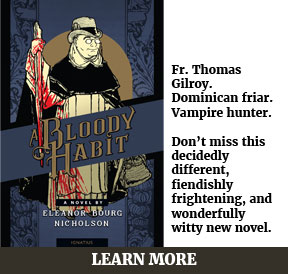
A few weeks ago, I took two of my children to the Legion of Honor museum here in San Francisco. My oldest, age six, is on the autism spectrum. We’d been to the museum before. Last time he had been so quickly overwhelmed that we had had to leave after twenty minutes. I was hoping that this time he would fare better.
The museum has a large collection of Rodin’s sculpture. His towering, roughly hewn figures are almost overpowering, and I was wondering how my son would take it. In the entry to the Rodin gallery are side displays showing his small plaster mock-ups and models that would serve to guide the large works.
Since it was a weekday, artists and art students were all around the museum, setting up easels and sketching with pen, pencils, and pastels. In the Rodin gallery a woman had already begun her sketched copy of a bust.
My son took it all in. At each sculpture he stopped and looked intently. He looked again at the plaster models. To my embarrassment (he doesn’t really understand the concept of “personal space”) he began to lean against the artist making her copy and peered at her sketch pad. She was good humored about it, as most people are with him.
My daughter, age five, was more interested in the paintings, especially the still life paintings of fruit and flowers. We went downstairs for a snack, and then back up to see more. At my son’s request, we ended up in the Rodin gallery again.
Later I realized that one of the things that attracted him to the sculptures was that he had been able to place them in context. We saw the models, and then the large works. I had explained that many sculptors made sketches first, just like the artist had been doing. This was connected to that. He spent the next week talking excitedly about the museum he would make someday, with sculptures like the ones he had seen.
My son loves things that have multiple sets of information. He loves Ray Harryhausen’s movies and will pore over the behind-the-scenes images. He loves Doctor Who and Star Wars and Godzilla, all franchises with lots of details to obsess over. He knows the names of all the actors who have played the Doctor, and can tell you who created Godzilla: Eiji Tsubaraya, the Japanese special-effects genius. But unless something is placed in context for him, he cannot figure it out. For example, he saw someone perform a magic trick where they placed a handkerchief over a toy, tapped it with a wand, and presto! there was a bird. He decided to try it for himself and burst into tears when the toy car didn’t turn into a pineapple as he had planned.
Hans Urs von Balthasar said that “truth is symphonic”. This is how to understand art: does it fit into the symphony of truth? You have to be able to grasp the context to understand the truth of a piece of art, and to see where it fits into the symphony. I think this is also where the attempts to separate Catholic art from art in general fall down: if Catholic art is catholic (i.e. universal), then all true art is Catholic. But it also requires that we first are able to grasp what the truth is, so that we are able to recognize it when we see it. It requires that we try to shed ideological assumptions and superfluous conventions and go deeper when we look at art.
With my oldest son, with his bright mind whirring away at all times, helping him understand the symphony of truth is different than how my wife and I as parents teach our other two children, whose minds intuit and can leap the gaps in information. With him we have to go back to a blank slate ourselves and try to see with him how to bridge the gaps and build structures for understanding complex arrangements like social situations, religious truths, and outside realities. He didn’t grasp the Eucharist until I drew a timeline chart showing the crucifixion, the ensuing years in between then and now, and then a science-fiction style wormhole portal demonstrating how the Eucharist at Mass connects with and is the same sacrifice at Calvary. In other words, we have to be creative.
When my son is uneasy or worried, he will ask questions that he knows the answer to already. “Who made Godzilla?” He likes the reassurance that the information hasn’t changed—it’s still there. As Catholics, we do this at every Mass, every time we pray a Rosary. What do we believe? We recite the Creed. Is this the Body of Christ? Yes—Amen. Who is our Father? The Father who art in Heaven.
“All true human art is an assimilation to the artist, to Christ, to the mind of the Creator”, says Joseph Ratzinger in his masterwork Spirit of the Liturgy. God is creative and so must we be as creatures made in his image and likeness. Creativity allows us to show the context for truths that must be communicated. Though not all of us think and process information like my son, we also need to know what our context is here in this world. Much of modern life seems to tell us that we are placed here in isolation and each of us has to figure out our place in the world. As Catholics, we say “no” to that isolation and tune our ears to the symphony that places us in context as sons and daughters of God, making our way through a fallen world in hope of eternal joy. We need to know our Creator. And art can be a powerful method of showing that truth to us.






Laura
April 4, 2014 at 11:39 pm
Thank you soooo much for this article. My son is autistic and sounds very similar to your son. I have struggled in the religious area on how to share our beautiful faith with him so that he could really understand it. You have really inspired me and given me some wonderful ideas. Thank you again!
John Herreid
April 5, 2014 at 12:38 am
You are most welcome! I’ve found that too much of the rhetoric and literature surrounding autism depicts it as a problem to be solved or a terrible affliction to be avoided at all costs. It seems much more helpful to me as a parent to try to enter into my son’s world so I can get to see things from his perspective and help guide him to bridge the gaps. If you have any insights as well, I’d love to hear them!
Stephanie
April 5, 2014 at 11:50 am
I loved your piece as it reminded me in this Lenten Season to be guided by a hand I cannot see to be open to all truth and to respect every individual as a child of God regardless of the challenges presented. Art teaches us to let go and be immersed in rather that stuck in our categorical thinking and processing of everything based on what we’ve learned as ‘truth’ over years of living. God Bless you for sharing your insights.
John Herreid
April 5, 2014 at 5:50 pm
Thanks, Stephanie!
kay
April 7, 2014 at 12:41 pm
Your article touches everyone and brings to life Art and Catholicism in a way that helped me appreciate it more. Thankyou to your son for his interpretation, and yours as a parent. So gentle and loving.
Ernie Salazar (aka Pompo)
April 7, 2014 at 1:34 pm
What an amazing and inspiring peace. We every single paragraph speaks to what we try to communicate to our six year old Grandson, Prestyn. Because of his autism, as you mention, we have to put everything in proper context. In doing so, we are being re-educated, not only in so many things that we take for granted, but in our catholic faith. He not only sees nature, but he hears it and feels it.Prestyn loves music, and although it causes him to cry, his favorite is “Oh, how I love Jesus!” He doesn’t start to cry until he hears,”Because He first loved me.” More on this later. Even before Prestyn was diagnosed at two years of age,his Mimaw and I have prayed The Divine Mercy Chaplet, and The Holy Rosary daily.Knowing very little about autism, we didn’t really understand sensory issues, which was why Prestyn loved the feeling of The Rosary beads. Even though Prestyn had a limited vocabulary, he soon started reciting the prayers with us. As you alluded to in your blog, if there is one thing Prestyn understands, it is constantcy. The beautiful, reptitious nature of The Rosary made him feel comfortable. Not only did the prayers improve is vocabulary, but they also relaxed him, making nap time less of an ordeal. Prestyn is now in an inclusion CCD program in preparation for receiving First Holy Communion.Now back to his favorite hymn. We firmly believe that the timing of his tears, coincides with the fact that,albeit in his own way,Prestyn understands that although he loves Jesus, that Jesus loved him first,and that’s what makes him special.
John Herreid
April 7, 2014 at 5:58 pm
Thanks, Kay! Ernie Salazar: I really enjoyed reading your insights. Keep up the good work with your grandson!